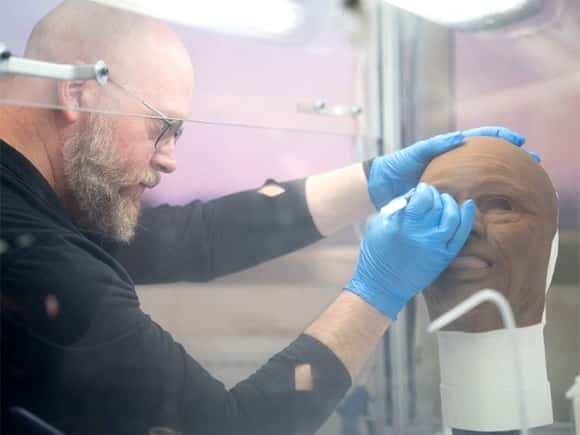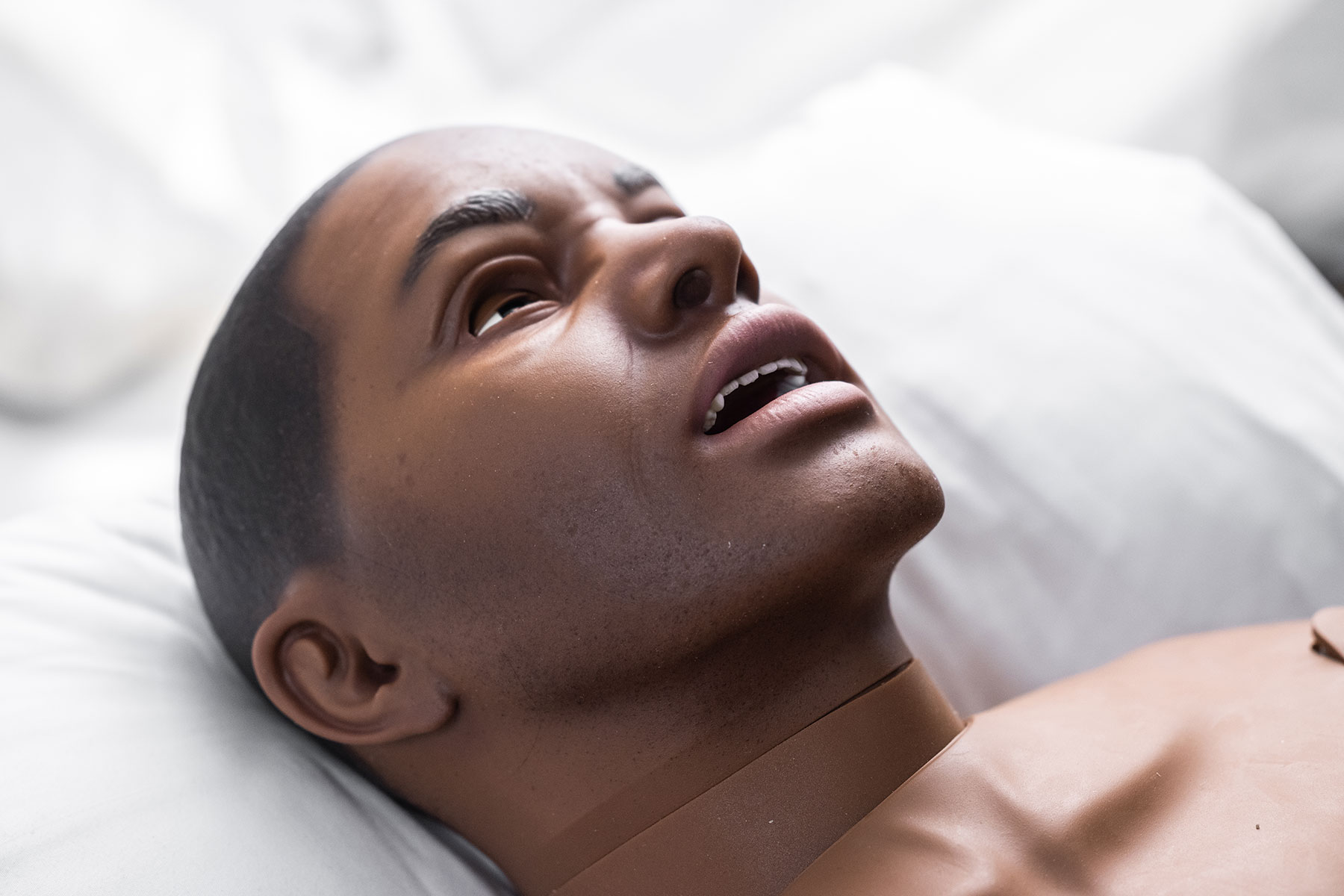The importance of realism in simulation-based learning for healthcare education.
Internationally renowned prosthetics artist, Stuart Bray, working on SimMan 3G PLUS.


The most effective simulation-based learning is carried out in a safe environment around structured patient cases that represent real-life or potential situations. These simulations facilitate learners’ preparedness for working in the clinical arena.
For Magnus Ove, Laerdal’s Vice President of Physical Platforms, realism has been top-of-mind lately. His team has worked with a Hollywood special effect artist to add realistic details to the physical appearance of our simulators, especially the latest SimMan 3G PLUS.
“Studies show that if the environment in which the learner is practicing does not even come close to imitating reality, then the learner will not fully engage in the learning exercise[1]. And, learning is compromised when not engaged”. Ove says.

Carefully applied details in beard stubble, skin, lips, and hair add realism to the new SimMan 3G PLUS
According to Laerdal’s Chief Learning officer, it can. “Effective and efficient healthcare simulations balance two factors, known as The Two R’s: Realism and Relevance. How the balance between them needs to be, must largely be informed by the learning- or improvement outcomes you aim for.” Says Michael Sautter.
“In other words, the desired outcome determines the input factors like simulators and their realism. There is no doubt that effective simulations can be achieved with less realistic simulation tools. But we do see a clear potential of embedding realism in healthcare simulation.” Sautter adds.
Fidelity refers to how closely a simulation imitates or amplifies, reality.[1] Simulation is being used in healthcare education more than ever before and can offer a fully immersive experience when high-fidelity devices are used.
In addition to realistic trauma, surgical and moulage features, simulation manikins with lifelike, fine details such as veins, imperfections, hair, and aging across ethnicities encourages more natural handling, bringing a new level of realism to healthcare training.
Simulation training is often praised for the opportunity it gives learners to interact with a “real” patient. Why not enhance this realism by using a patient profile that is complete with racial, ethnic, socioeconomic, geographical, and religious differences?
A bi-national study showed that nursing students improved in their cultural awareness after participating in a simulation experience.[2] In this study, learners used an assessment checklist as a guide to understand their simulated patients. While the checklist reinforced questions and observations that are important in a cross-cultural (or any) patient interaction, the simulation itself provided the opportunity to put theory into practice.
To effectively train the next generation of healthcare providers, and to prepare them to treat patients of all backgrounds, Laerdal is committed to developing different ethnicities using interchangeable face skins where patient appearance can be switched according to desired training scenarios and with enhanced realism with lifelike details hand painted by special effects artists.
Sautter commented: “In high-risk, high-yield environments like inside a hospital, realism in simulations is more than a hygiene factor meant primarily to suspense belief and create engagement. It may very well be what determines the very quality of the healthcare offered at that institution. Complex, ad-hoc team structures, highly advanced equipment, and a life at stake, calls for the highest degree of realism to fine-tune the clockwork of interprofessional collaboration that has proven to be a determining factor of patient outcomes.
“Further to this, we have come to learn that diversity and equity in healthcare are understated factors in healthcare education. Providing healthcare students with the much-needed realism in their learning, holds the potential for tipping the scale back towards quality healthcare for all.”
1. Realism – EM Sim Cases
2. Miller, 1990
How to Address Minority Health Disparities Through Simulation | Laerdal Medical
3. https://doi.org/10.1016/j.ecns.2011.01.004